Consumer cameras have come a long way, from the bulky and slow cameras, to one that inconspicuously lives on the back of your phone, packing enough imaging technology to make your next Outfit Of the Day (#OOTD) look amazing.
In this smartphone era, where you can see how a photo is going to turn out before you even press the shutter, camera manufacturers have been pushing the mirrorless technology to the entire range of cameras, and more recently, their high-end range of Digital Single Lens Reflex (DSLR) cameras. In a traditional camera, a mirror reflects the image into the viewfinder. Mirrorless cameras today either use electronic viewfinders (EVF) or a screen for users to frame their photos before shooting.
Without the beefy mirror box taking up space inside the camera body, mirrorless cameras can be made much smaller than their DSLR counterparts. Originally popular with beginners and casual photographers, mirrorless cameras are now challenging DSLRs in the professional field, as they offer advantages over DSLRs such as high speed burst stills, and 4K video recording with accurate auto focus (AF) tracking.
Whether you’re an amateur, or a seasoned photographer, there is a mirrorless camera catered for you. Check out these latest mirrorless ILCs!
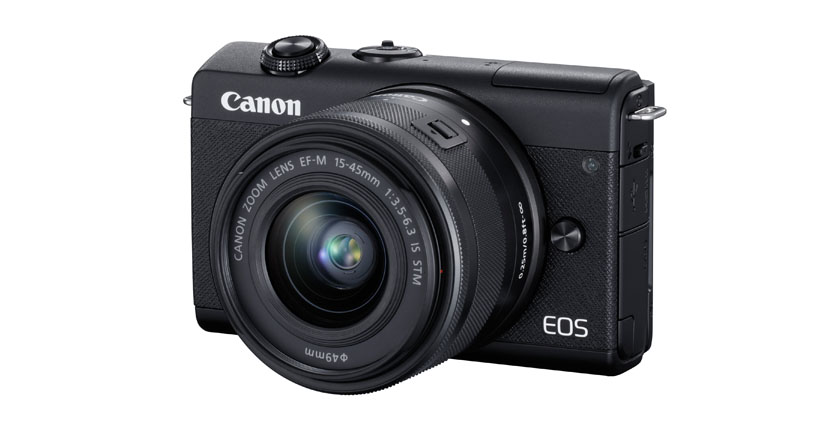
Canon EOS M200
Sensor: APS-C CMOS
Pixel count: 24.1 MP
Video: 4K/25p
System: EF-M, EF/EF-S lenses with adapter
Designed to be slim and lightweight, the EOS M200 features the beginner-friendly “Creative Assist” function. This can guide photography amateurs to operate the camera and learn more about the right settings for a great shot. It comes with Dual Pixel CMOS autofocus (AF) technology, which allows for high-speed AF with fast live view shooting.
Eye Detection AF focuses on the subject’s eyes even if the subject is constantly moving. Processing is done with the new DIGIC 8 image processor, with a max ISO capability of 51200 for still images. This makes capturing clear images in dark locations possible. The EOS M200 is also capable of shooting 4K videos at up to 25p.

Canon EOS R5
Sensor: Full Frame CMOS
Pixel count: 45 MP
Video: 8K/30p
System: Canon RF mount, EF/EF-S lenses with adapter
This is Canon’s first camera capable of recording video at 8K. With a new 45-megapixel CMOS image sensor, paired to the DIGIC X processor, it is also capable of burst still photos at up to 20 frames per second (fps). This camera also comes with a CFexpress card slot, which is the fastest memory card format on the market at a theoretical 4 gigabytes per second, or simply put: over 13 times faster than the fastest SD card today.
With all-new Animal Detection AF and powerful In-Body Image Stabilization, the EOS R5 also comes with an improved AF algorithm, capable of detecting the body, face and eyes of animal subjects such as dogs, cats and even birds. The Animal Detection AF in the EOS R5 is capable of detecting erratic movements, enabling users to shoot a variety of fast-moving subjects with greater ease.
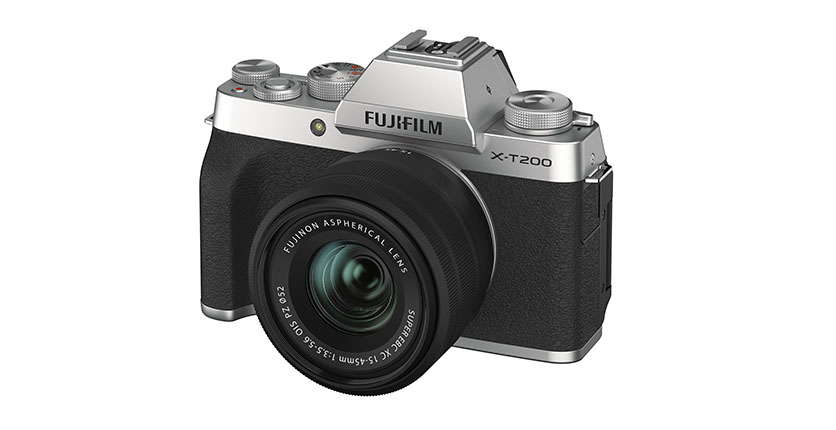
Fujifilm X-T200
Sensor: APS-C CMOS
Pixel count: 24.2 MP
Video: 4K/30p
System: Fujifilm X-mount, M-mount lenses with adapter
The camera’s AF performance has been enhanced by placing on-sensor phase detection pixels across the sensor and adopting a new algorithm. This enables outstanding AF tracking of a moving subject and AF on faces / eyes, as well as giving the ability to attain focus quickly and accurately even in low light conditions. The camera boasts continuous shooting of 8fps.
On the rear panel of the camera body is a bright and large widescreen LCD monitor that provides intuitive touchscreen operations. It can be used in conjunction with the Face / Eye AF for easy “self portraits”. The camera extended the array of video functions so that users can record smooth 4K video at 30fps or HDR movie providing expanded tonal range. For creativity, it offers 11 variations of Fujifilm’s unique Film Simulation Modes including Velvia and PROVIA, making it possible to add a photographic film feel to the images.
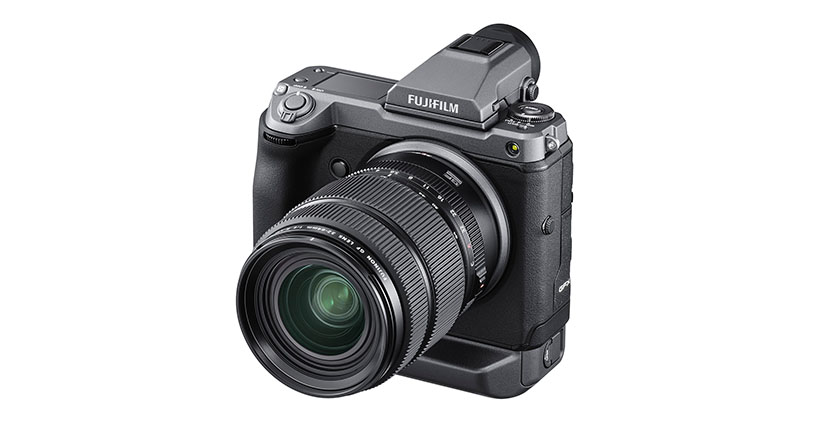
Fujifilm GFX100
Sensor: Large Format CMOS sensor
Pixel count: 102 MP
Video: 4K/30p
System: Fujifilm G-mount, H-mount lenses with adapter
The GFX100 uses a large format CMOS sensor which is 1.7 times bigger than a 35 mm full-frame format. This is also the first model that offers a back-illuminated sensor with phase detection pixels, in-body image stabilization and 4K video recording capability. Fujifilm claims an almost 100% sensor coverage for the AF phase detection pixels, which improves the accuracy of Face and Eye Detection AF.
To cater for professionals, photos can be saved in 16bit RAW or TIFF. It also features the newly-developed “Smooth Skin Effect” function, which automatically smooths the skin tone and reduces the amount of post-processing work. The body structure is made from magnesium alloy and it is weather-sealing at 95 points, making this camera resistant to dust, moisture and low temperature. It is also the first Fujifilm camera to have a vertical grip built into the camera body.
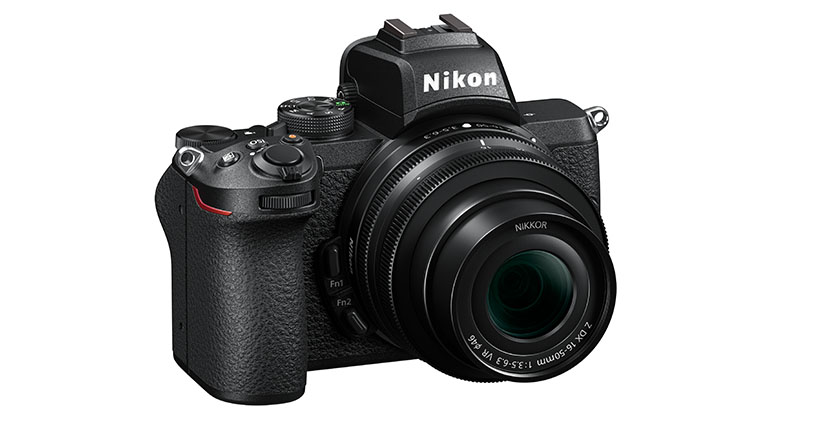
Nikon Z 50
Sensor: APS-C CMOS
Pixel count: 20.9 MP
Video: 4K/30p
System: Nikon Z mount, F-mount lenses with adapter
Nikon’s first Z-mount crop sensor camera body was announced together with two crop sensor Z-mount lenses. The compact body packs the performance needed for still photography and high-quality 4K video. Using phase-detection AF, it can accurately track focus of subjects in real time with eye-detection AF.
Videographers will find the wide array of movie functions useful. It has features like a zero-crop full-pixel 4K readout, full-HD video at 120p with audio, as well as a built-in slow-motion movie creation tool. Users can also select the Creative Picture Control option and record videos. Additionally, this camera can create 4K and Full HD time-lapse footage without the need for a computer.
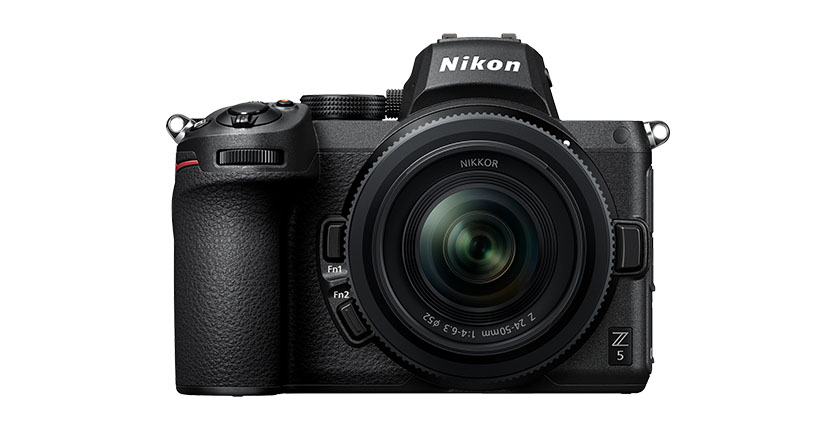
Nikon Z 5
Sensor: Full Frame CMOS
Pixel count: 24.3 MP
Video: 4K/30p
System: Nikon Z mount, F-mount lenses with adapter
Joining the Z 7 and Z 6, Nikon’s latest mirrorless camera is designed for “emerging creators”. With a full-frame sensor and Expeed 6 image-processing engine, it promises high-resolution and low-noise photos. A 273-focus point hybrid AF system which uses both focal-plane and phase-detection, is capable of Eye-Detection AF and Animal-Detection AF for consistently sharp photos and videos.
With the built-in Creative Picture Controls taking some of the guesswork out of photography, videographers can benefit from the sensor shift five-axis in-camera Vibration Reduction (VR) system which can mostly eliminate shaky videos. Plus, when it is paired with an F-mount VR lens via an adapter, it gives the camera a total of three-axis VR: Yaw, pitch and roll.
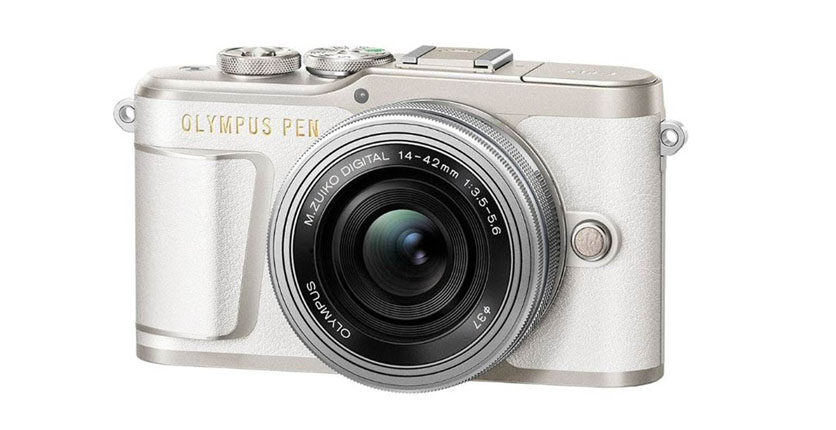
Olympus Pen E-PL9
Sensor: 4/3 Live MOS
Pixel count: 16.1 MP
Video: 4K/30p
System: Micro Four Thirds Mount
Using smartphone-like navigation, users can snap creative photos simply by selecting an Art Filter and releasing the shutter. The art filter has a live preview on the rear monitor as well. For more seasoned photographers, the Advanced Photo Mode makes difficult photography techniques, such as overlapping images for a multi-exposure photo, as easy as following on-screen instructions.
Featuring an in-body image stabilisation with the TruePic VIII image processor as used in the top-range OM-D E-M1 series, this feature makes it possible to capture beautiful photos with minimal noise even in dark conditions, even with shaky hands.
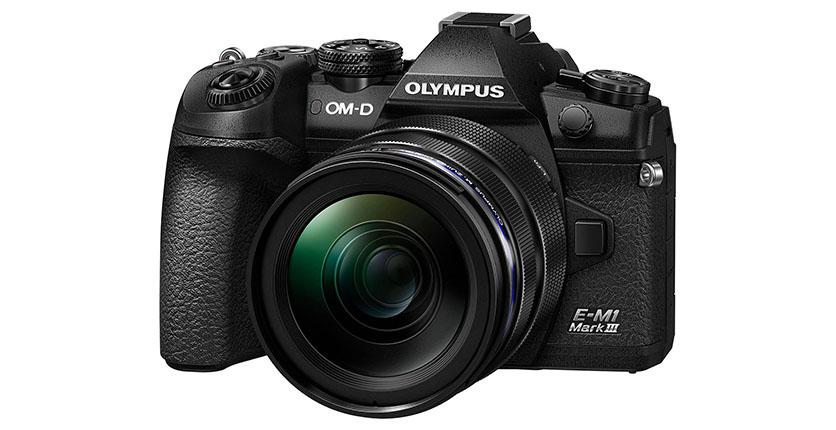
Olympus OM-D E-M1 Mark III
Sensor: 4/3 Live MOS
Pixel count: 20.4 MP
Video: 4K/30p
System: Micro Four Thirds Mount
With a new imaging processor, the TruePic IX, the E-M1 Mark III is capable of advanced features such as “50MP Handheld High Res Shot” and “Live ND”. Capable of taking up to 80 MP photos with a tripod, this high-res performer also comes with a fast 18fps AF tracker, which is capable of Starry Sky AF on top of face priority and eye priority AF.
It shoots stills at up to 60 fps with AF/ and exposure lock, at the full resolution; this fast shooter also allows you to customise the AF target area on the E-M1 Mark III to suit the behaviour of the subject. The powerful image processor also allows for in-camera fisheye lens compensation and keystone compensation – which corrects a photo’s perspective regardless of the angle it was shot from.
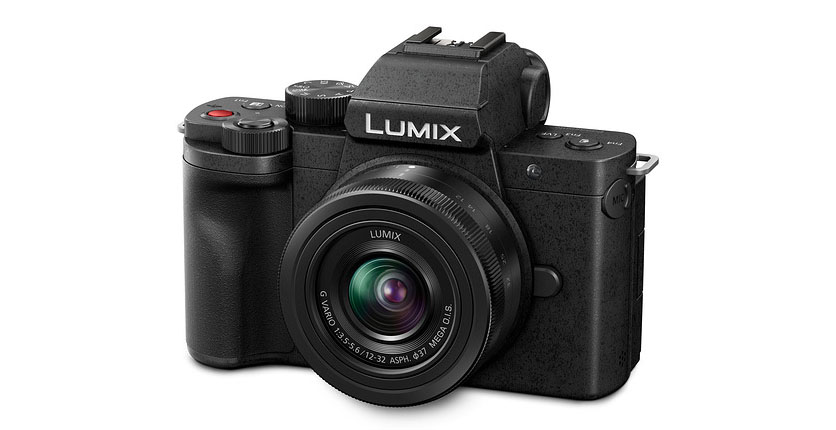
Panasonic Lumix G DC-G100
Sensor: 4/3 Live MOS
Pixel count: 20.3 MP
Video: 4K/30p
System: Micro Four Thirds Mount
With the increasing need for video content, Panasonic’s latest G-series camera is designed and developed for videographers. For a start: the 5-Axis Hybrid Image Stabiliser keeps the footage smooth, and it has a Frame Maker for checking the composition in various popular aspect ratios such as 16:9, 4:3, 1:1, 4:5, 5:4 and 9:16. With a maximum ISO of 25600, it can shoot well in low light as well as day photos. The Venus Engine processor assures high-speed image processing.
It also has OZO Audio by Nokia, which enables users to capture and edit sound with vibrant accuracy and precision. The microphone system also provides a Tracking mode that keeps tracking the voice of the target subject. Auto mode automatically switches the Tracking mode and Surround mode.
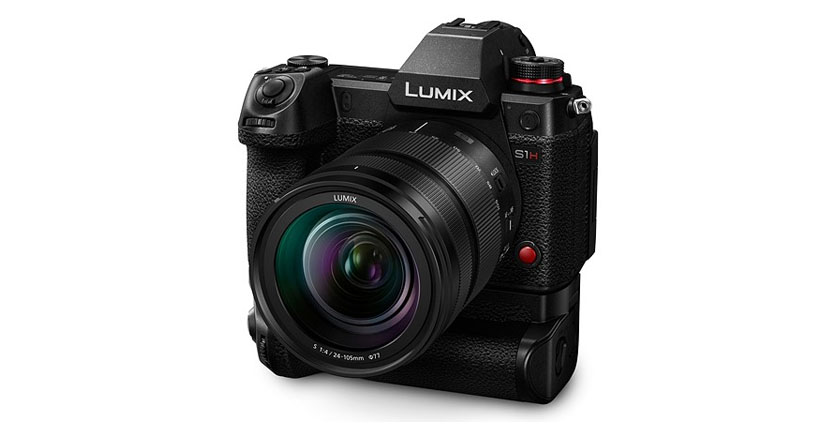
Panasonic Lumix S1H
Sensor: Full Frame CMOS
Pixel count: 24.2 MP
Video: 6K/24p
System: L Mount
Taking a leaf from Panasonic’s cinema cameras, the S1H can record 10-bit 60p 4K or C4K videos, along with a wide variety of recording formats. The camera also packs both V-Log and V-Gamut with a wide dynamic range of 14+ stops to capture everything from dark to bright areas.
It uses artificial intelligence (AI) AF in the Venus Engine that can recognise human bodies, and animals. A fast sensor-lens communication of 480 fps and Panasonic’s DFD (Depth From Defocus) technology allows a quick autofocus speed of approximately 0.08 seconds. In high-resolution mode, eight consecutive images are automatically shot while shifting the sensor using the Body Image Stabilizer mechanism. The Venus Engine processes the images to create a 96 MP (12,000 x 8,000 pixel) RAW file.
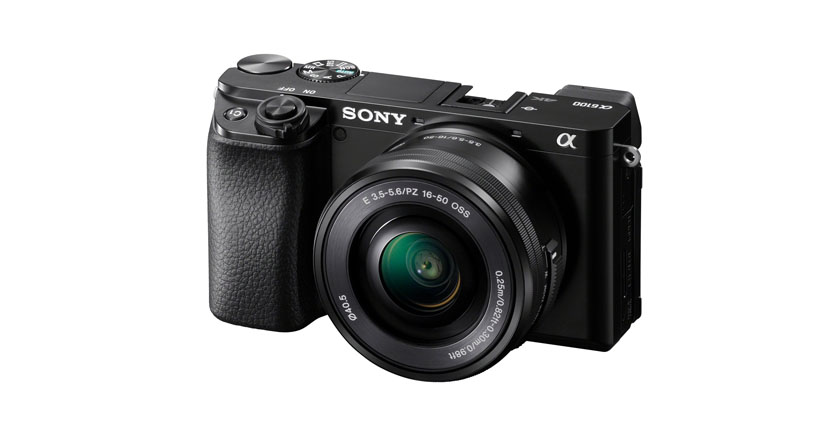
Sony A6100
Sensor: APS-C Exmor CMOS
Pixel count: 24.2 MP
Video: 4K/30p
System: E-mount
Featuring a total of 425 phase-detection AF points, together with contrast-detection AF, this compact mirrorless camera boasts a fast AF speed of 0.02s. The AI subject recognition uses colour, pattern (brightness), subject distance (depth) and face and eye information to recognise and maintain focus in real time.
To make the camera easier to operate, Sony allows up to eight of the camera’s keys and controls to be custom-assigned to any of 89 shooting and replay functions. The My Menu feature allows flexible assignment of 30 menu items, and the custom settings screen helps keep track of everything. Built-in guides for menu items are also available with a single button press.
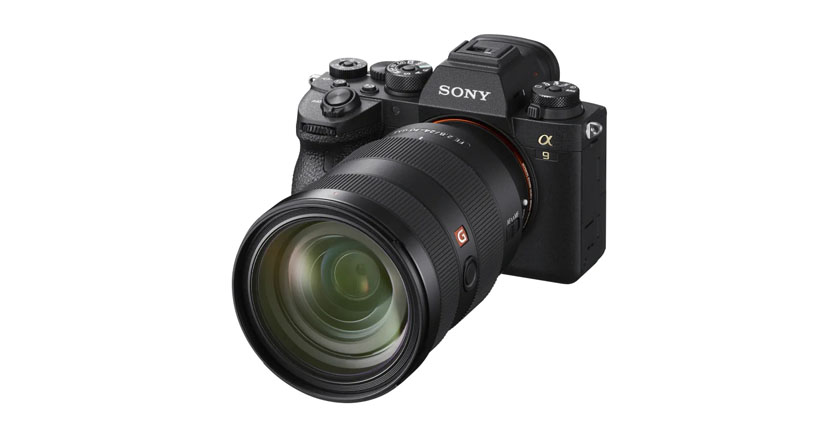
Sony A9 II
Sensor: Full Frame Exmor RS Stacked CMOS
Pixel count: 24.2 MP
Video: 4K/30p
System: E-mount
Continuous shooting of up to 20fps with the BIONZ X processor and electronic shutter, the A9 II has a high-speed 1/32000 sec anti-distortion shutter which suppresses rolling shutter effect when recording videos of moving subjects and other fast-moving activities.
Being a camera equipped with both electronic and mechanical shutters hints at its professional-grade as mechanical shutters allow a better flash synchronisation speed. The “stacked” CMOS sensor integrates the pixel area, integral memory and a hi-speed signal processing circuit. It even features a LAN terminal which supports gigabit network, for transmission media via FTPS (File Transfer Protocol over SSL/TLS).







